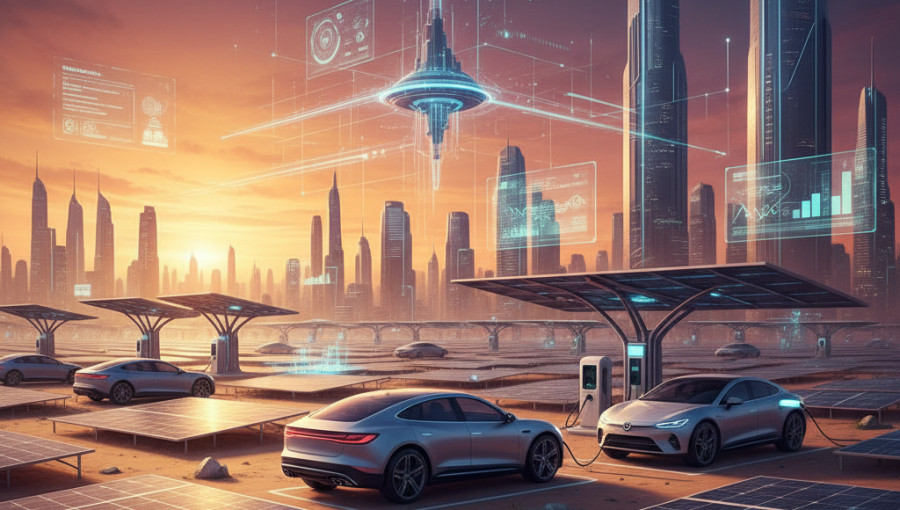The strategic pairing of solar energy with electric mobility is becoming a cornerstone of efforts to decarbonize the global power and transportation industries. As the adoption of electric vehicles accelerates, ensuring they are charged with clean energy is vital to achieving their climate benefits. Sun-drenched regions like the Gulf Cooperation Council (GCC) are well-positioned to pioneer this integration, but realizing this potential requires coordinated policies, smart infrastructure, and regulatory reform to build a resilient, low-carbon energy system for the future.
Two major shifts are propelling the global move toward cleaner energy: the rapid expansion of solar power and the burgeoning electric vehicle (EV) market. Projections indicate that global electric car sales will exceed 20 million units by 2025, representing over a quarter of all new vehicles sold. This unprecedented growth is placing immense pressure on existing electricity grids. Without a dedicated strategy to integrate renewables, the increased demand could be met by fossil fuels, which would merely transfer CO2 emissions from tailpipes to power plants. Directly linking solar energy to charging infrastructure is therefore critical to maximizing the environmental advantages of EVs.
Nations within the GCC are making significant strides in both sectors, creating a prime environment for this synergy. Saudi Arabia has set a target of 58.7 GW of renewable capacity and aims for 30% of vehicles in its capital, Riyadh, to be electric by 2030. In the United Arab Emirates, the Energy Strategy 2050 is driving world-class solar developments like the 5 GW Mohammed bin Rashid Al Maktoum Solar Park. Qatar is also aiming to generate 30% of its electricity from solar sources within the decade. These ambitious targets provide a strong impetus to connect the region’s vast solar resources with its growing demand for electric transportation.
The true potential of combining solar power with e-mobility is unlocked through intelligent technologies. Given that vehicles typically remain parked for about 95% of the day, a significant opportunity exists to schedule charging during peak solar generation hours. This alignment can be managed through smart charging systems, battery storage that banks excess solar power for later use, and groundbreaking bidirectional technologies like Vehicle-to-Grid (V2G). V2G systems enable EVs to act as mobile power sources, feeding electricity back to the grid during high-demand periods, thereby bolstering grid stability and resilience.
Practical applications of this integrated approach are already emerging worldwide. Common use cases include residential homes equipped with rooftop solar panels, corporate campuses with solar carports for employee charging, and public fast-charging stations powered by on-site solar installations. European nations provide strong examples: Germany offers incentives for homeowners to combine solar, battery storage, and EV charging systems, while the Netherlands has developed a national smart charging network that prioritizes solar energy. Norway has also successfully used subsidies to encourage solar-powered charging, complementing its hydropower-dominated grid.
Despite the promise, significant hurdles remain. A key challenge is the temporal mismatch between peak solar energy production in the middle of the day and peak charging demand, which often occurs in the evening. Other obstacles include high upfront investment costs, inconsistent policies between the energy and transport sectors, and electrical grids not originally designed for such dynamic and distributed energy flows.
To overcome these barriers, policymakers must create unified frameworks that streamline permitting processes and establish clear regulations for technologies like V2G. Grid operators need to invest in modernizing their infrastructure with smart grid capabilities and introduce dynamic pricing that encourages charging during sunny periods. In parallel, the private sector must innovate to deliver interoperable and affordable solutions. Through strategic collaboration, regions like the GCC can leverage the rising demand for electricity as a catalyst for a smarter and more sustainable energy future.

